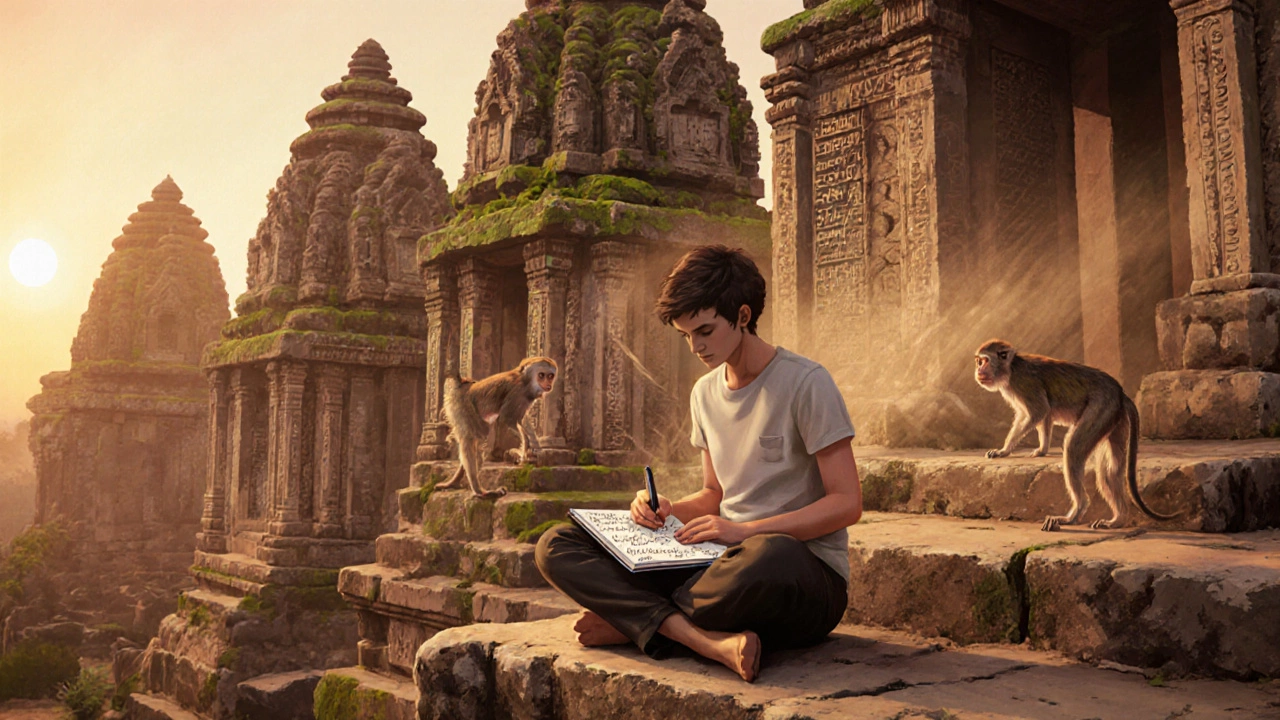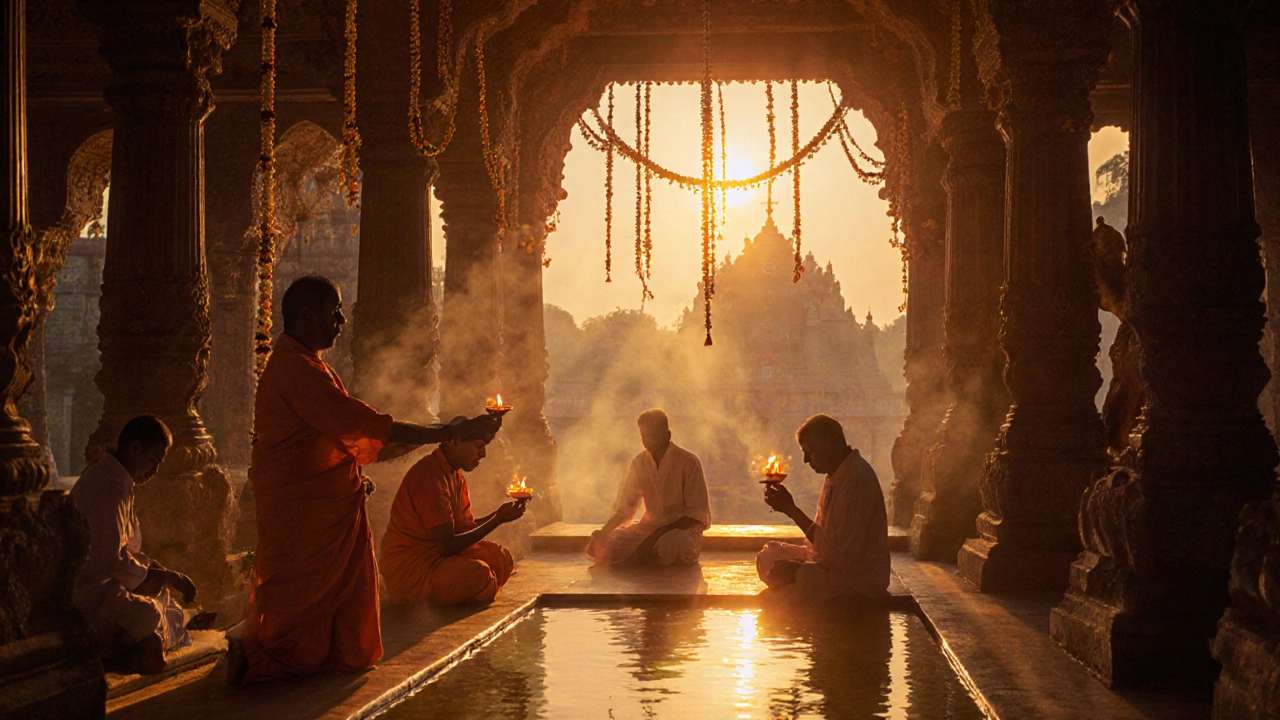How long should you spend in South India? There’s no one-size-fits-all answer, but if you’re planning a trip here in 2025, the sweet spot is usually 10 to 14 days. That’s enough time to feel the rhythm of the region without rushing through its best spots. Skip the two-day whirlwind-it won’t do justice to the temples, backwaters, hill stations, and spice-scented streets that make South India unforgettable.
What You’ll Miss in Less Than 7 Days
Seven days sounds like a solid chunk of time until you realize South India stretches from the Kerala coast to the Tamil Nadu hills, and from Karnataka’s ancient ruins to Andhra’s quiet temples. Trying to cover all of it in a week means you’ll end up stuck in trains or taxis, checking off landmarks like a to-do list. You’ll see the Meenakshi Temple in Madurai, but you won’t feel the morning chants echoing off its stone pillars. You’ll ride a shikara in Alleppey, but you won’t taste the coconut curry fresh from a houseboat kitchen.
People who rush through South India in under a week often come back saying, ‘It was nice, but I didn’t really get it.’ The region doesn’t reward speed. It rewards stillness. A slow morning in Pondicherry’s French Quarter. A quiet walk through Mysore’s palace gardens at sunset. A late-night chat with a tea vendor in Coonoor who’s been pouring filter coffee for 40 years.
10-Day Itinerary: The Balanced Route
Here’s what works for most travelers in 2025:
- Day 1-3: Mysore and Srirangapatna - Start here. Mysore’s palace glows gold at night, and the nearby fort town of Srirangapatna has quiet riverside walks and colonial-era bungalows. Skip the crowds of Hampi for now-this is where you ease into the pace.
- Day 4-5: Coorg - Drive up to the misty hills. Coffee plantations stretch for miles. You’ll wake up to birdsong and drink coffee grown just outside your room. Rainfall is low in November, so trails are dry and perfect for short hikes.
- Day 6-7: Alleppey and Kumarakom - Stay in a traditional houseboat. Not the flashy ones with DJs-go for the local operators who serve fresh fish curry and let you nap under a cotton canopy. The backwaters here aren’t just scenic; they’re alive with fishing nets, children rowing to school, and women washing clothes on the banks.
- Day 8-9: Kodaikanal - The air here is crisp. Take the short walk to Bryant Park, then hike down to Bear Shola Falls. Skip the tourist traps on the main road. Eat at the local mess where the staff knows your name by day two.
- Day 10: Madurai - End here. The Meenakshi Temple opens at 5:30 a.m. Be there. Watch the priests light oil lamps in the inner sanctum. The scent of jasmine garlands fills the air. This is the soul of South India.
This route avoids the busiest spots (like Goa or Ooty in peak season) and focuses on places where travelers still feel like guests, not intruders. You’ll sleep in family-run guesthouses, eat at street stalls with no signs, and ride local buses with farmers and students. That’s the real South India.
14 Days? Go Deeper
If you have two weeks, you can add layers. Take a day trip to the forgotten temples of Belur and Halebid-stone carvings so detailed, they look like lace. Spend a night in Kumbakonam, where temple bells ring every hour and the streets smell of turmeric and sandalwood. Visit the quiet beaches of Kanyakumari, where the Arabian Sea, Bay of Bengal, and Indian Ocean meet. Watch the sun set over the water, then stand in silence as the moon rises over the Vivekananda Rock Memorial.
Or, if you’re drawn to history, swap Kodaikanal for Hampi. The ruins here are staggering-stone chariots, collapsed temples, boulders with ancient inscriptions. You can spend two full days wandering alone among them, with only monkeys and the wind for company. Few tourists make it this far, and that’s why it feels sacred.

What Not to Do
Don’t try to cram in Chennai. Unless you’re into museums or colonial architecture, it’s a city that doesn’t reveal itself quickly. Skip the crowded hill stations of Ooty in November-too many package tours, too many souvenir shops. Don’t book a 3-day Kerala tour from a hotel in Mumbai. Those are designed for people who want to say they’ve been, not for those who want to feel it.
Also, don’t assume you need to see everything. South India isn’t a checklist. It’s a feeling. One perfect day in a houseboat can mean more than three rushed days in five cities. You’ll remember the taste of a banana leaf meal in a village home, not the name of a temple you snapped a photo of from a tour bus.
Seasonal Timing Matters
November is one of the best months to visit. The monsoon has ended, the air is clean, and the hills are still green. Temperatures hover between 22°C and 30°C-perfect for walking. By December, the crowds start rolling in from North India. January brings cooler nights, but also more tourists. If you want peace, November is your month.
Avoid May to July. It’s hot, humid, and sticky. Even the locals stay indoors during midday. If you must travel then, stick to the highlands-Coorg, Kodaikanal, or the Nilgiris. But even then, it’s not ideal.

How to Make Your Trip Feel Real
Here’s what separates a good trip from a great one:
- Learn to say ‘Nanni’ (thank you) in Tamil, ‘Dhanyavad’ in Kannada, and ‘Nannayi’ in Malayalam. Locals notice.
- Take a cooking class in a home kitchen. You’ll learn how to roast curry leaves, grind coconut, and make dosa batter the old way.
- Ask a local where they eat on Sundays. Follow them. You’ll find the best biryani in town, not on TripAdvisor.
- Carry a small notebook. Write down the names of places you visit, the people you meet, and what you ate. You’ll forget the details later-but the feeling stays.
South India doesn’t need you to see all of it. It just needs you to be present.
What to Pack
You don’t need much:
- Light cotton clothes (no heavy jackets)
- A scarf or shawl for temple visits (shoulders and knees covered)
- Comfortable walking shoes (you’ll walk on uneven stone)
- A small daypack for water, sunscreen, and a notebook
- Reusable water bottle with filter (tap water isn’t safe)
- Small gifts for hosts: tea, chocolates, or local sweets from home
Leave the expensive camera at home. Your phone will do fine. What you’ll remember isn’t the photo-it’s the sound of temple bells at dawn, the smell of cardamom in the air, the way a stranger smiled and offered you a cup of tea without asking why you were there.
Can I see South India in 5 days?
You can technically visit three cities in five days, but you won’t experience South India. You’ll see temples, backwaters, and hills from a car window. You’ll miss the quiet moments-the early morning prayers, the local markets before noon, the taste of food made with care. Five days is enough for a quick taste, but not for the full flavor.
Is 10 days enough for South India?
Yes, 10 days is the ideal minimum. It lets you cover the core highlights-Mysore, Coorg, the backwaters, Kodaikanal, and Madurai-without rushing. You’ll have time to rest, eat slowly, and let the rhythm of the region sink in. Most travelers who do this trip feel they’ve truly experienced South India, not just visited it.
Should I visit Kerala or Tamil Nadu first?
Start with Karnataka (Mysore), then head to Kerala (Alleppey), and end in Tamil Nadu (Madurai). This route follows the natural flow of the region’s culture and climate. Kerala’s backwaters are lush and slow-paced, perfect after the temple energy of Mysore. Madurai’s intensity makes a powerful ending. Going backward-starting with Madurai-can leave you overwhelmed before you’ve had time to adjust.
What’s the best way to travel between cities?
Trains are the best option. Book AC 3-tier or sleeper class for comfort. They’re affordable, scenic, and connect most major towns. For shorter hops-like Mysore to Coorg-hire a private driver for the day. It’s cheaper than you think and gives you flexibility. Avoid long-distance buses unless you’re on a tight budget; they’re slow and uncomfortable.
Are there any hidden gems most tourists miss?
Yes. Belur and Halebid in Karnataka have some of the finest Hoysala temple carvings in India, but almost no tourists go there. The village of Kumbakonam has dozens of ancient temples with no crowds. The coastal town of Mahabalipuram has rock-cut shrines older than the pyramids, and you can often have them to yourself at sunset. These places don’t have Instagram influencers-but they have soul.
Next Steps: How to Plan Your Trip
Start by picking your dates. November is ideal. Then decide how much time you can realistically take off. If you have 10 days, follow the balanced route above. If you have 14, add Hampi or Kumbakonam. Book your first two nights in advance-Mysore and Alleppey fill up quickly. After that, wing it. Some of the best experiences come from spontaneous decisions-a local suggests a temple you didn’t know existed, or a tea shop owner invites you to try his grandmother’s recipe.
South India doesn’t need a perfect plan. It needs a curious heart.
